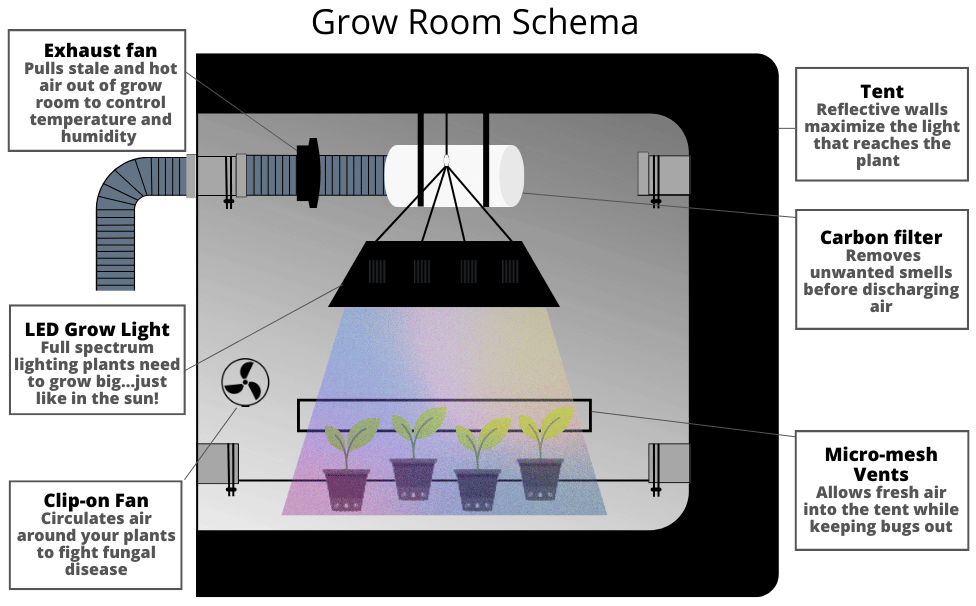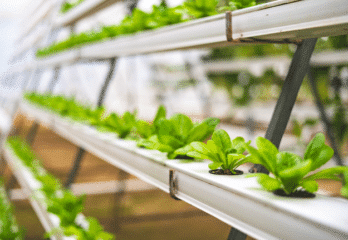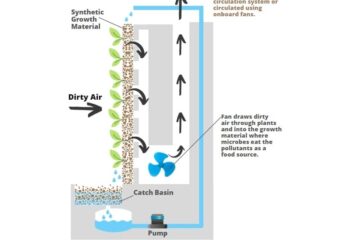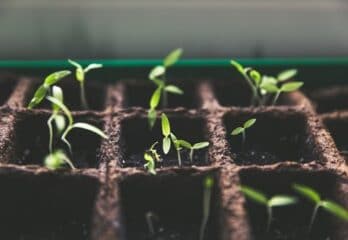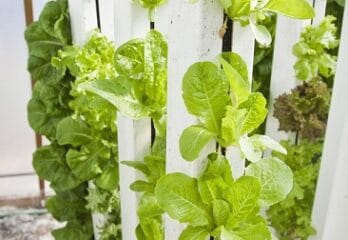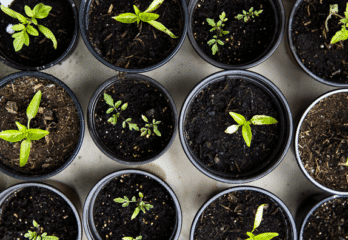An in-house garden is a set of plants that you grow inside a home, office, or any other facility that is not considered outdoors. A herb garden, obviously, is a garden where you grow herbs. Herbs are the plants we use in cooking, medicine, cosmetics, etc. So, the main purpose of such a garden is to provide a stable supply of rare or expensive herbs.
In my opinion, a garden that is well-arranged and guarded can extend the lifespan of your herbs for up to a year. Herb gardens come in various shapes and follow different principles of plant growth. To establish one, you must be familiar with the fundamental principles of indoor plant cultivation. Fortunately, all the necessary information is provided in this guide, so continue reading to learn more.
 Before you start growing hydroponics herbs, veggies, and leafy greens, you’ll need to pick the right system to start with. Here are our suggestions: Our Picks for the 5 Hydroponic Towers in 2021, Picks for the 5 Aeroponics Systems, and Our Picks for the 5 Hydroponic Bucket Systems with Buyer’s Guides.
Before you start growing hydroponics herbs, veggies, and leafy greens, you’ll need to pick the right system to start with. Here are our suggestions: Our Picks for the 5 Hydroponic Towers in 2021, Picks for the 5 Aeroponics Systems, and Our Picks for the 5 Hydroponic Bucket Systems with Buyer’s Guides.
Indoor Vertical Herb Garden Setting
Though it is not the most complicated thing on Earth, a vertical herb garden requires several steps to consider. They include choosing the proper spot to place a garden, the right watering, the choice of herbs, and the proper soils and fertilizers. Also, we will consider some vertical garden ideas in the next section. Let’s dip into detail.
Choosing the Right Spot
A proper spot for a garden means safety, instant and healthy growth of the herb, convenience, and utility of the whole garden. The first thing you should know is that there are different herbs when it comes to sunlight needs. Some herbs are not doing well without daily potions of direct sunlight. Others can stand much longer without it. And, you will hardly find a plant that does not need sunlight at all. So, the first task is picking an ideal spot for your garden. From my experience, it would be perfect if:
- find a spot with different sunlight coverage, so you can grow several types of herbs simultaneously;
- be confident that the garden is not affected by drafts;
- you will protect it from pets and other people (in case of pets, we recommend using the wall hanging vertical gardens);
- be able to support constant medium temperature on the spot.
A windowsill can be the simplest garden spot. It is convenient for you and does not take much space. In the case of a vertical garden, you can say goodbye to the sunlight from that window, though. If you have enough space, you can organize the vertical garden stand with the pots on different levels. Otherwise, we recommend considering ceiling pots and wall gardens.
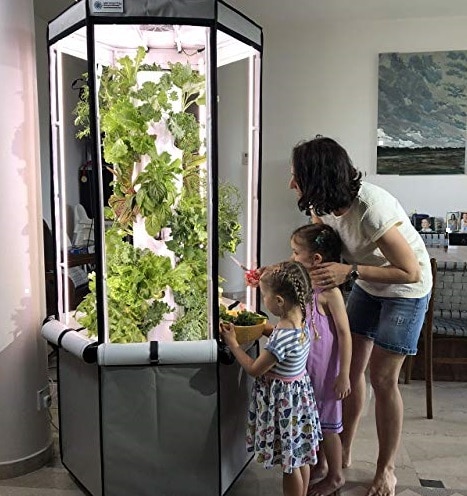
 Aerospring 27-Plant Vertical Hydroponics Indoor Growing System
Aerospring 27-Plant Vertical Hydroponics Indoor Growing System
- Easy to use aeroponic system for your home
- Fan - Grow Lettuce, Herbs, Veggies & Fruits
- Grow smart & eat healthy, 20 gallon water reservoir Grow Tent, LED Grow Lights
Pay Attention to Drainage and Watering

Pot organization is essential for proper herb growth. Each pot must contain:
- enough soil for herb roots;
- drainage (small rocks, plastic orbs, pebble stones, etc.)
- holes in the bottom and a plate for spare water.
As the herbs tend to grow like grass (in dense groups), the pot must have enough room. Depending on the herb amount, it should be of medium or big size. Drainage is crucial, as it lets the soil let go of the spare water and saves roots from rotting. The amount of drainage should not exceed more than two-three horizontal fingers.
As for watering, it will depend on the herb choice. Some herbs like dry soil with minimal moisture, others like when it is wet. Consult the gardener’s guide for guessing the right amount of water needed and the number of times of watering a herb.
The soil for growing herbs is similar to regular soil for plants, but it’s recommended to buy it from a store instead of collecting it from a garden. Herbs also require fertilizers, and chemical solutions are recommended over manure or similar organic matter (keep in mind that you are gardening at home). Fertilization should be done every four to six months, depending on the specific herb, and the gardening guide can provide recommendations for the right fertilizer to use in your situation.
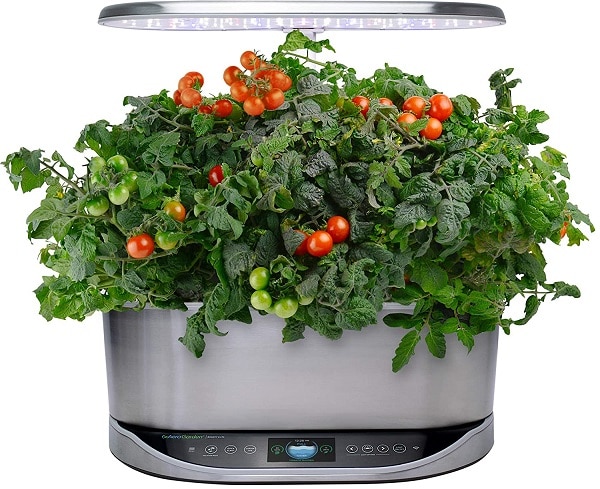 AeroGarden Bounty Elite - Indoor Garden with LED Grow Light
AeroGarden Bounty Elite - Indoor Garden with LED Grow Light
- WiFi and Alexa Compatible, Stainless Steel Grow up to 9 plants, up to 24duim
- Includes everything you need to grow
- 50 watt LED Grow Lights, perfect spectrum for fast growth & big harvests
Pick Suitable Herbs
Maybe, it is a key part of your vertical garden planning process, as it affects all the other choices directly. First, if you have any special needs right now, take into attention your capability to grow herbs. The small apartment will not afford many herbs, while a big house can contain the maximum diversity of herbs. In the case of an apartment, we recommend planting similar herbs that require the same environment. Some of them can even be planted together (see the FAQ section). Otherwise, you set your imagination free and choose whatever you want. Also, consider the future use of your herbs (if you would like to grow spices, tea herbs, or just decorative plants).
If the herb does not grow in particular places in the wild (rocks, tropics, etc.), it can be grown in your house with ease. Hopefully, there are not so many of them.
For instance, garlic and onion are the plants that prefer outside growing. All herbs that have significant root crops do not like indoor growth as well. On the other hand, all traditional spices (mints, oregano, even pepper) do well if they get enough sun.
Use Fertilizers and Potting Mixes

In most cases, you will need a standard soil mixture. The specialists suggest using garden soil, compost, and lava sand to get the perfect mixture. The amount of compost may vary depending on the herb. For instance, so-called Meditterenian plants (rosemary, oregano, lavender, etc.) require little water, so they do not need much compost, the main water holder of the soil. In the shops, both offline and online, you will find many soil mixtures that fit different plants.
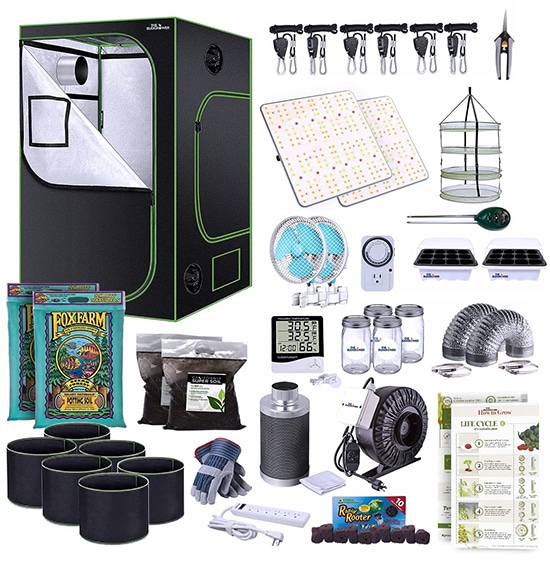 TheBudGrower Complete All-in-One Home Grow Solution 4x4x7ft- 2200W(2)
TheBudGrower Complete All-in-One Home Grow Solution 4x4x7ft- 2200W(2)
- LED lights specialty manufactured by VIVOSUN with Samsung LM301 diodes for FULL spectrum light
- The industries most durable grow tent – heavy duty 1680d oxford cloth
- Money & energy saving complete home grow tent kit
The other crucial moment is fertilizing and chemical protection of the plant. Luckily, these plants are not likely to suffer from fungi, mold, and other types of parasites. They do not require many mineral fertilizers as well. You can fertilize the herb each 4-6 months and before the active growth period. Do not exceed fertilizing, as it will do harm to a plant.
Also, we recommend eliminating all the weeds from the pots that are not your herbs (they will appear anyway).
How To Make a Vertical Herb Garden

In my opinion, there are several variations of a vertical herb garden. It will depend on your taste, interior, and purpose of the garden.
- For a decorative one, we suggest ordering a vertical hanging frame with pots. There, you can plant some interesting plants with long, voluble stems that can grow and clasp. English ivy, devil’s ivy, heartleaf philodendron, creeping fig, and spider plant will feel well indoors.
- If you like succulent plants, there is an option to make a decorative garden with them. You will need small containers for soil and nothing more. Succulents can grow together with ease.
- Also, a decorative garden can be made from simple pots (or any other containers that match your interior) and a wooden (plastic, metal) stand. There are lots of stands with a different number of levels.
The gardens can vary in forms as well. If you want to make a plant garden, consider the following: the plants must grow well to yield. Herbs need enough soil and water (in some cases). So, not every vertical stand will do well. Avoid stands with small in-built pots. Use the following recommendations:
- your stand should be convenient for watering and grooming your herbs;
- depending on a herb choice, the pots can be situated closely or with some distance between;
- the stand must be strong enough, as herbs require soils and big pots (if you want to grow them for purpose, they must be in big amounts).
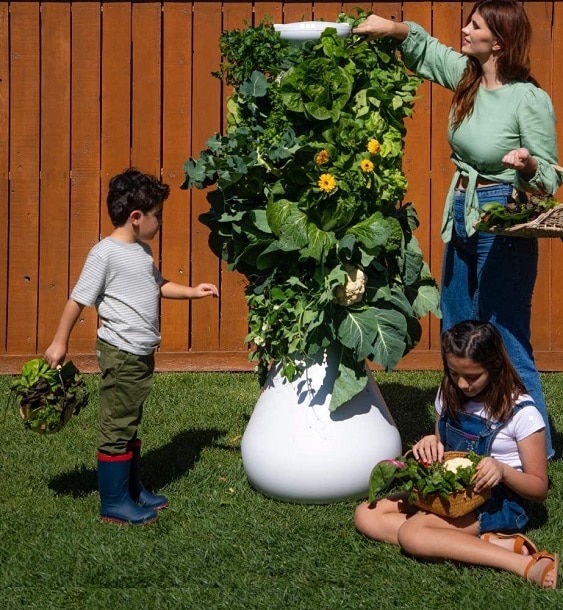 Lettuce Grow 36-Plant Hydroponic Growing System Kit
Lettuce Grow 36-Plant Hydroponic Growing System Kit
- Large Home Organic Gardening with Self Watering with Pump, BPA Free and Food Grade
- Outdoor Indoor Vertical Garden Herb Vegetable Planter Tower
- All the gear: farmstand tower, water pump, power cord, timer; and Nutrients for 130+ Plants
So, what do you need to make a vertical garden? Here are some 4 crucial moments:
A stand is the most crucial choice.
We will talk more about its varieties in the next section of this guide. Mind that it must be convenient and safe both for plants and for you.
Pots are the second essential component, as they define the possible shape and purpose of your stand.
There are lots of pots, starting with simple flower pots and finishing with specialized containers. In the shops, you will find a lot of different variants. The simplest one is buying herbs already planted in special pots for in-home growing.
Proper soil is the last element.
Picking it, you must consult the gardener’s guide and be dependent on the plants you would like to grow. Though, the majority of herbs do not require special soils. Also, we do not recommend using the soil from your garden. Buy a couple of bags instead – plants are likely to start growing better in virgin soil without possible weeds and parasites.
Heating and enlightenment systems.
If you fail to find the proper warm and well-enlightened spot, you’ll need some assistance. Use heaters only if you are sure that a spot in your garden cannot hold the normal indoor temperature. And there are a lot of systems that imitate sunlight available in shops.
As soon as you get all the components, you can start assembling your garden. Install a stand. Then fill the pots with soil, water the soil a little bit, and plant your herbs there. Water a bit again or use special anti-stress mixtures that help plants take roots better. Then, place the pots on the stand. Install the helping elements needed and make sure to protect the stand from falling and accident contacts. Watch how your herbs grow!
BONUS: Indoor Herb Garden Ideas

So, i think these are some ideas concerning an indoor vertical herb garden. Let’s start with the stand:
It can be a simple stand, a multi-layered table with a solid base, and smaller surfaces on the top. Let’s consider some unusual ideas for the herb garden.
There is an option to get the task done without any stands at all. You can buy or assemble a pot tower with a unifying watering system, and you need to build a vertical pyramid or tower consisting of plant pots, with some holes in the bottom of the vertical pots. You water the upper pots, and they transmit water to the bottom plants for some time. The advantages are convenience and less time consumption. The disadvantages are the possible complicity of the task and lack of construction stability.
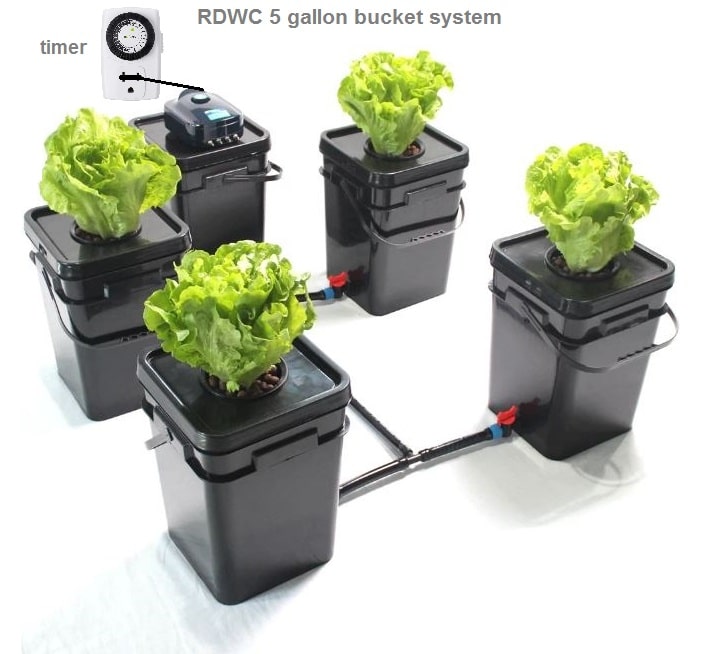
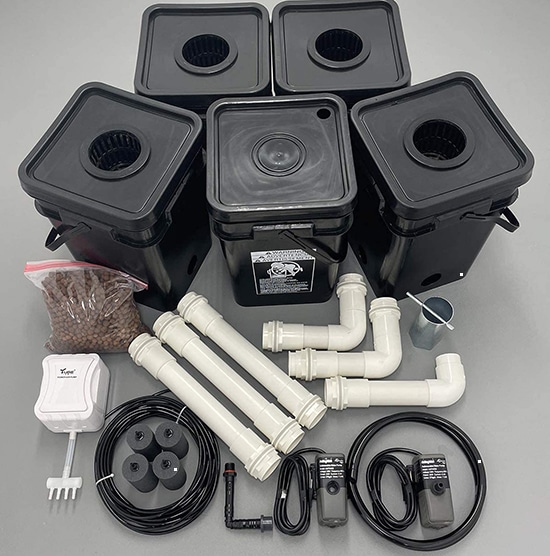 Recirculating Deep Water Culture (RDWC) Hydroponic Grow Kit System
Recirculating Deep Water Culture (RDWC) Hydroponic Grow Kit System
- Reservoir Bucket Connected to 4 Grow Buckets
- 400 Gallon/hour Circulating Pump
- Large 5 gallon square buckets, pre-drilled
You can buy NFT hydroponic system or make your own hydroponic station. As we said, hydroponics is a way to grow plants without soil. Some plants do well with it. The advantage of the station is the solid level of independence of the human factor. You can leave your room for plants for some time, and nothing will happen with it. The main disadvantage is the possible complicity, expensiveness, and the significant room to be taken by such a garden.
A simple idea of a herb garden is just a set of wooden containers hanging on the wall.
If you have a wall spot with good enlightenment, you can do it. You’ll need a set of containers (they can be assembled with ease) and some powerful hooks to be screwed into the wall. The advantage of the system is that you can change the positions, take off the containers, and get more with ease. Plus, it is a good economy of space. Such a garden is less vulnerable to unlikely contact with people and pets. There are some disadvantages though: extra attention while watering and the wall is lost for any other purposes.
Hanging pots can be another option if you do not have enough space. These are the pots that have hooks to be hung from the ceiling. They look good, do not take much space, can be regulated, etc. They are safe for the house with pets as well. The only problem is harvesting the herbs and watering them.
Another creative way to make a garden is making a blackboard with herbs.
You need to get a blackboard, cut out some holes in it, and put the sprouts from behind the board into the holes. It will look like you’ve got bare plants. They will be easy to harvest, but the whole construction is difficult to water.
If you have enough space on the flow, you can build an outside garden imitation. You can make the garden patches using pipes, wood, or just long pots. It will be easy to water, and with some decorative talent, it looks fantastic.
Conclusions
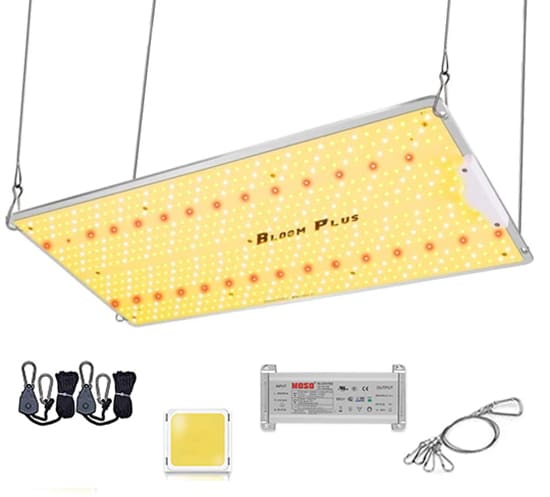 BLOOM PLUS LED Grow Lights, BP 2500W 2X4ft Coverage Grow Light Use with 646packs Samsung Diodes(Includes IR)
BLOOM PLUS LED Grow Lights, BP 2500W 2X4ft Coverage Grow Light Use with 646packs Samsung Diodes(Includes IR)
- For Indoor Hydroponic Plants Seeding Veg and Bloom
- Dimmable Sunlike Full Spectrum Plant Grow Lights
- 30-day money-back guarantee and a trusted 3 years warranty
From my experience, there are lots of ideas concerning your home growing place. Choose whatever you like taking into account the free space of your house and its environmental conditions. Even the basic knowledge taken from this guide or other sources will let you grow plants successfully. Hopefully, they are not very demanding and do not require everyday attention and protection.
FAQ
What are Indoor Gardens?
The indoor garden is a special space inside any building where you grow plants. It has different purposes (decorative gardening, growing sprouts, vegetables, etc.), and it is commonly applied to increase a lifespan of a seasonal organism or to grow delicate plants that cannot live outdoors in your area. It has got a set of variations. Hydroponic gardening uses no soil, and container one implies soil.
How do I Make an Indoor Herb Garden?
There are a lot of variants of indoor gardens. To make one, you need to pick the plants to grow first. Depending on their preferences in light and location, you must pick a spot in your building and a shape of a future garden (vertical, horizontal, pots, etc.). Then, decide if you want to grow them with soil or hydroponics. After that, order everything you need for a particular garden and assemble it.
What Herbs Can Be Grown Indoors?
Many plants can successfully grow indoors if you have the proper environment. Even fruits (lemons) and vegetables (cherry tomatoes) can yield. As for the specific plants, there are at least 20 different plants, including basil, chives, oregano, parsley, rosemary, thyme, tarragon, mint, etc. There are some plants that grow outside better, though: garlic, chamomile, fennel, dill, etc. Consult specialized forums or gardener's guides to learning if a herb you would like to grow feels good indoors. For instance, basil can be grown indoors, but it is very tender.
Do Indoor Herb Gardens Work?
It will depend on the construction of your indoor place. If it is a horizontal garden that uses pots with soil, the principle of its work is simple. Plant a sprout, water it sometimes, and cut the sprouts and leaves when they grow. The vertical gardens can be the same or with a system of automatic watering. In this case, your only duty is to watch the water, not to end in a tank. If you do everything right, an indoor garden can ensure the constant growth of herbs for many months.
How Do You Care for an Indoor Herb Garden?
First of all, be confident that plants get enough sun. Proper watering and drainage should be the second thing to consider. Use freshly purified and settled water for your plants. Use only recommended chemicals for plants. From time to time, you need to fertilize the soil. Also, it is recommended to reseat the plants if they grow big. Indoor gardens are not likely to suffer from parasites and insects, but you should protect them from bacteria and mold. Do not forget to clean the tank of a hydroponic factory every two months.
What Herbs Don't Need Direct Sunlight?
Not every plant grows under direct sunlight. Some of them even do not like it. It does not mean that they do not need light at all, but they do well in a badly enlightened room. So, the shade-loving plants are chervil, cilantro, lemon balm, chives (which is considered to be the easiest one to grow in bad sunlight), lemon verbena, dill, parsley, bay, mint, tarragon, and more. Note that the plants need special attention when they are badly enlightened.
What is The Easiest Herb to Grow Indoors?
Mint, oregano, thyme, parsley, and bay are considered to be the easiest plants to grow indoors. They stand bad enlightenment, drafts, and lack of watering. Plus, they grow pretty fast and do not suffer much if the sprouts and leaves are cut. However, you should care about them as well. These herbs must grow in soils with fertilizers. Also, they must be watered sometimes.
What Herbs can be Potted Together?
It is quite easy to remember what plants can be planted together without serious consequences. The general principle of picking the plants to grow together is similar to environmental preferences. You can remember the following groups with ease:
- Mints: specialists do not recommend planting mints with other plants, as they are likely to capture maximal space. However, they can be planted with other mints successfully. Catmint, spearmint, peppermint, and lemon balm grow together.
- Lemon herbs like lemon verbena or lemon thyme will grow together, filling your space with a pleasant scent.
- Moisture-loving plants like basil and parsley stand wet soil and have big amounts of sunlight.
- So-called Mediterranean herbs (lavender, thyme, oregano, and others) like dry soil, on the other hand.
Are Herb Gardens Worth It?
The proper answer depends on the purposes you imply creating a special place. If you would like to decorate the space in the house, vertical plants gardens with non-demanding plants can be a good investment. If you grow plants for culinary or cosmetic purposes, you might lack them sometimes if you want to use them every day. The best opportunity to use the herb garden is during winter when fresh plants are rare and expensive. In total, the plant garden is worth your efforts and expectations.
Where Should I Plant My Herb Garden?
The right spot for a plant garden is essential. It depends not only on the location but on the herb choice. Some of them like direct sunlight, some do not. So, if you are to install a her4b harden, make sure that the spot is not accessible for pets (or at least be confident they do not touch your plants). The location should not contain drafts. Make sure that it is warm enough in winter. A windowsill or an enlightened corner of the room should be perfect.
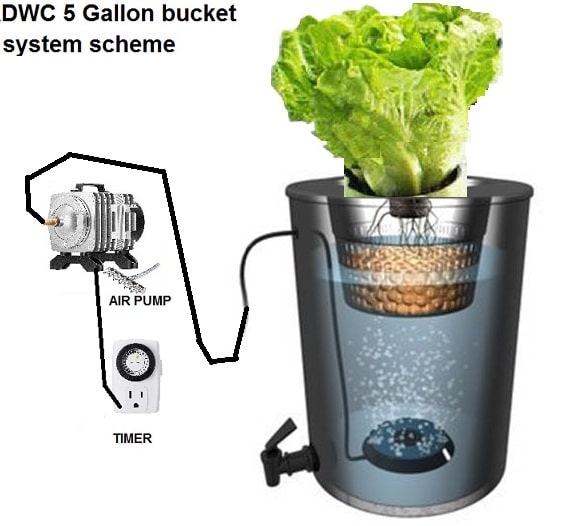
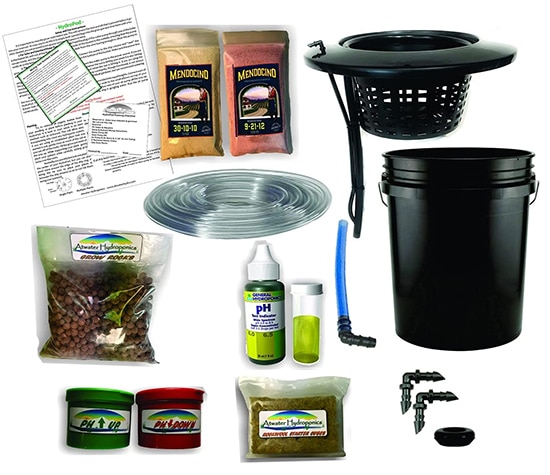 The Atwater HydroPod - Standard A/C Powered DWC/Recirculating Drip Hydroponic Garden System Kit
The Atwater HydroPod - Standard A/C Powered DWC/Recirculating Drip Hydroponic Garden System Kit
- Most efficient use of water compared to traditional gardening
- Dual outlet air pump, Nutrients are Included!
- Kit contains everything you need to start your own garden (minus plants and water!)

